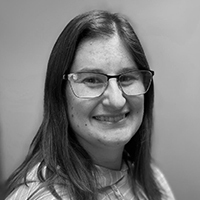Question
What are the reasons why a pediatric specialty bed is needed?
Answer
Specialty beds find application across a spectrum of medical conditions, serving as a vital solution for various scenarios. The conventional association with safety beds tends to revolve around conditions like cerebral palsy, seizures, Down Syndrome, and other medically driven factors, aligning with the notion of hospital beds. However, a noteworthy trend is emerging where referrals are made for children with more active dispositions or those diagnosed with autism spectrum disorders.
Increasingly, we are encountering instances wherein the primary concern is not just medical in nature, but more centered around the child's activity levels. These children may exhibit difficulties remaining in their beds during the night, facing challenges in staying within their designated sleep spaces. These difficulties can arise due to behavioral reasons. For instance, a child might engage in disruptive behaviors during nighttime, including self-injurious actions or repetitive movements that pose a risk to their well-being.
Consequently, the child's bedroom and bed transform into potentially hazardous environments. In response to these circumstances, families may reach out to us for assistance in creating a secure haven for their children. The overarching objective is to provide an environment that ensures the child's safety while also facilitating uninterrupted sleep for the child and much-needed respite for the family.
These situations highlight the multifaceted role of specialty beds. While traditionally associated with medical needs, their utility now encompasses behavioral and safety considerations. As therapists, our purview encompasses not only the physical aspects of a child's well-being but also their emotional and psychological needs, as well as the overall harmony of the household. By addressing these evolving demands through the application of specialty beds, we contribute to enhancing the quality of life for both the child and their family.
Within the realm of specialty beds, there exists a diverse array of models designed to cater to various needs and circumstances. On one end of the spectrum, we find models that are intended for permanent installation and can be seamlessly integrated with the existing bed frame. These models provide a sense of stability and permanence, often resembling the complete structure of a standard bed.
Conversely, there are also travel-friendly models available, specifically crafted to offer flexibility and convenience. These models are designed to fold and compactly fit into a suitcase or bag, making them exceptionally suitable for families that frequently transition between multiple locations. Whether it's a shift between a winter and summer residence or the need for a portable solution, travel models address the practicalities of modern living.
The value of travel models extends beyond mere convenience. For families requiring a safe and consistent sleep environment for their child while on the move, these models present an invaluable solution. Maintaining a structured sleep routine, regardless of the location, can significantly impact the child's well-being and the family's overall quality of life.
This Ask the Expert is an edited excerpt from the course Pediatric Specialty Beds by Lindsey Veety, PT, DPT, ATP/SMS
